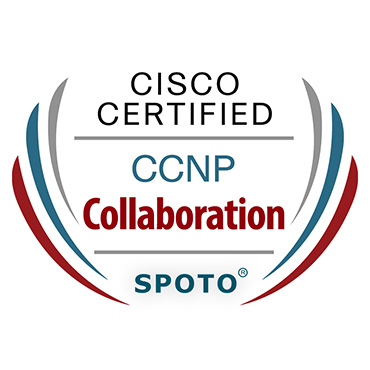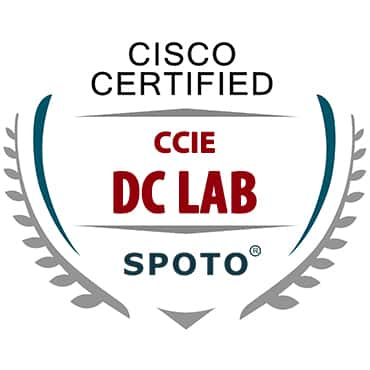
From February 24, 2020, the Cisco certification program will change dramatically. We will no longer have multiple different CCNA examinations and certifications, providing only a comprehensive examination. code for the new exam is 200-301 CCNA, its full name is “implementing and managing cisco network technology “.
Unit 1: Network Fundamentals
1. Introduction to the OSI Model
2. Introduction to IPv4 (Internet Protocol)
3. IPv4 Packet Header
4. Address Resolution Protocol (ARP)
5. Introduction to TCP and UDP
6. TCP Header
7. TCP Window Size Scaling
8. Introduction to ICMP
9. Introduction to DNS
10. Introduction to Cisco Command Line Interface (CLI)
11. User mode and Privileged mode
Unit 2: Network Access
2.2 VLANs and Trunks
1. Introduction to VLANs
2. How to configure VLANs
3. VLAN Trunking Protocol (VTP)
4. Introduction to 802.1Q
5. How to configure a Trunk
6. Dynamic Trunking Protocol (DTP)
7. 802.1Q Native VLAN
8. Introduction to Voice VLAN
9. Etherchannels
10. L3 Etherchannel
2.3 Spanning-Tree
1. Introduction to Spanning-Tree
2. Per VLAN Spanning-Tree
3. Spanning-Tree Port States
4. Spanning-Tree Cost Calculation
5. Spanning-Tree Portfast
6. Rapid PVST
7. Rapid PVST Configuration
2.4 Wireless
1. Introduction to Wireless Networks
2. Introduction to Wireless LANs
3.Wireless LAN 802.11 Service Sets
4. Introduction to Wireless Security
5.Wireless Authentication Methods
6.Wireless Encryption and Integrity
7. Wi-Fi Protected Access (WPA)
8. Cisco Wireless Network Architectures
9. Cisco WLC Deployment Models
10. Cisco Wireless AP Modes
11. Cisco Wireless LAN Controller (WLC) Basic Configuration
12.Cisco WLC WPA2 PSK Authentication
Unit 3: IP Connectivity
3.1 Introduction
1. Introduction to Routers and Routing
2. Cisco IOS Router Basic Configuration
3. Introduction to Wide Area Networks (WAN)
3.2 IPv4 Subnetting
1. Introduction to Subnetting
2. Basics of Binary Numbers
3. Subnetting in Binary
4.Subnetting in Decimal (Fast Method)
5. Classless Inter-Domain Routing (CIDR)
6. Variable Length Subnet Mask (VLSM)
7. Route Summarization
8. Hexadecimal to Binary and Decimal Conversion
9. Create a Subnetting Cheat Sheet
3.3 IPv6
1. Introduction to IPv6
2. Shortening IPv6 Addresses
3. How to find IPv6 Prefix
4. IPv6 Address Types
5. IPv6 Address Assignment Example
6. IPv6 EUI-64
7. IPv6 Summarization
8. IPv6 Solicited Node Multicast Address
9. IPv6 Neighbor Discovery Protocol (NDP)
10. IPv6 Stateless Autoconfiguration
3.4 Routing
1.Default Gateway
2. Static Routing
3. IPv6 Static Route
4. IP Routing Explained
5. Router on a Stick
6. InterVLAN Routing
7. Administrative Distance
8. Floating Static Route
9. Introduction to Route Summarization
3.5 OSPF (OPEN SHORTEST PATH FIRST)
1. Introduction to OSPF
2. OSPF Configuration
3. OSPF Packets and Neighbor Discovery
4. OSPF Reference Bandwidth
5. OSPF Router ID
6. OSPF DR/BDR Election
7. OSPF Passive Interface
8. OSPF Hello and Dead Interval
3.6 Gateway Redundancy
Introduction to Gateway Redundancy
Unit 4: IP Services
4.1 DHCP (Dynamic Host Configuration Protocol)
1. Introduction to DHCP
2. DHCP Server Configuration
3. DHCP Relay Agent
4. DHCP Client
5. DHCP Server IPv6 Configuration
4.2 SNMP (Simple Network Management Protocol)
Introduction to SNMP
SNMPv2
SNMPv3
4.3 NAT (Network Address Translation)
1. Introduction to NAT and PAT
2. NAT Static
3. NAT Dynamic
4. Port Address Translation (PAT)
4.4 (QoS) Quality of Service
1. Introduction to Quality of Service (QoS)
2. IP Precedence and DSCP Values
3. Classification
4. Marking
5. Shaping
6. Policing
Unit 5: Security Fundamentals
5.1 Access-Lists
1. Introduction to Access-Lists
2. Wildcard Bits
3. Standard Access-List
4. Extended Access-List
5. Time-based Access-List
5.2 Misc
1. Port-Security
2. AAA and 802.1X
3. AAA User Authentication
4. AAA Admin Authentication
5. DHCP Snooping
6. Introduction to Firewalls
7. Introduction to VPNs
Unit 6: Network Management
1. Introduction to CDP
2. Introduction to LLDP
3. Telnet Server and Client
4. SSH Server and Client
5. Introduction to NTP
6. Introduction to Syslog
7. Configuration Register
8. Password Recovery on Cisco IOS
9. Cisco IOS File System
10. Upgrade Cisco IOS Image
Unit 7: Automation and Programmability
- Device Programmability
2. REST API
3. Data Models and Structures
4. Configuration Management Tools and Version Control Systems
5. Introduction to Software Defined Networking (SDN)
6. Spine and Leaf Architecture
Unit 8: Cloud Computing
Virtual Machines and Containers
Introduction to Cloud Computing
Cloud Connectivity
Under the current CCNA certification program, there are multiple concentration exams for different learning paths. However, under the new rules, the following certifications will all be replaced by the new CCNA:
CCNA Cloud
CCNA Collaboration
CCNA Data Center
CCNA Industrial
CCNA Routing and Switching
CCNA Security
CCNA Service Provider
CCNA Wireless
CCDA (Cisco Certified Design Associate)
So, the specialization at the CCNA level is going away – you will now choose your specialization at the CCNP level.
Current CCNA certificates
your CCNA certification will remain valid until its expiry date. As the new plan comes into effect in February 2020, your current CCNA certification will be converted to an equivalent certificate in the new plan. so if you have any current CCNA certificate (e.g. CCNA industry certificate or CCNA routing and exchange certificate), a new CCNA certificate is automatically obtained.
if you are working on obtaining the current CCNA certification, please ensure that the certification is completed by 23 February 2020. CCNA who pass any old CCNA exam before the February 24 deadline will automatically obtain a new CCNA certificate and a training badge representing the following before February. Candidates completed 24 centralized training sessions. so if you pass (e.g.) the CCNA Wireless exam before the deadline, you will get a new CCNA certificate and CCNA Wireless training badge.
CCENT
CCENT will retire in February 2020 and it will not apply to the new CCNA certification. Please make sure to pass two ICND exams and get a CCNA certificate by 24 February 2020. otherwise, you need to take the exam again to complete the CCNA certification.
About the new exam
200-301 is a single examination, including 120 questions. It covers a wide range of topics, such as routing and switching, security, wireless networks, and even some programming concepts. as with other cisco certifications, you can do certification in any Pearson VUE certification center.
About the new curriculum
The modules comprised in the new CCNA curriculum are:
Network Fundamentals – routers, switches, cabling, TCP and UDP, IPv4 and IPv6
IP Connectivity – IP routing, OSPFv2
IP Services – NTP, DCHP, QoS, SNMP
Security Fundamentals – VPNs, wireless security, port security
Network Access – VLANs and trunking, EtherChannel
Automation and Programmability – REST APIs, Puppet, Chef, JSON, SDN
Removed topics
The following topics have been removed from the new CCNA curriculum:
Network fundamentals – OSI model
LAN Switching – Frame, VTP, Switch stack
Routing – EIGRP, RIPv2, OSPFv3, Inter-VLAN routing
WAN – PPP, MLPPP, PPPoE, GRE, BGP, WAN access












Comments